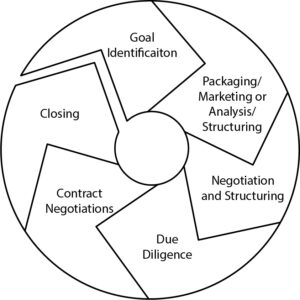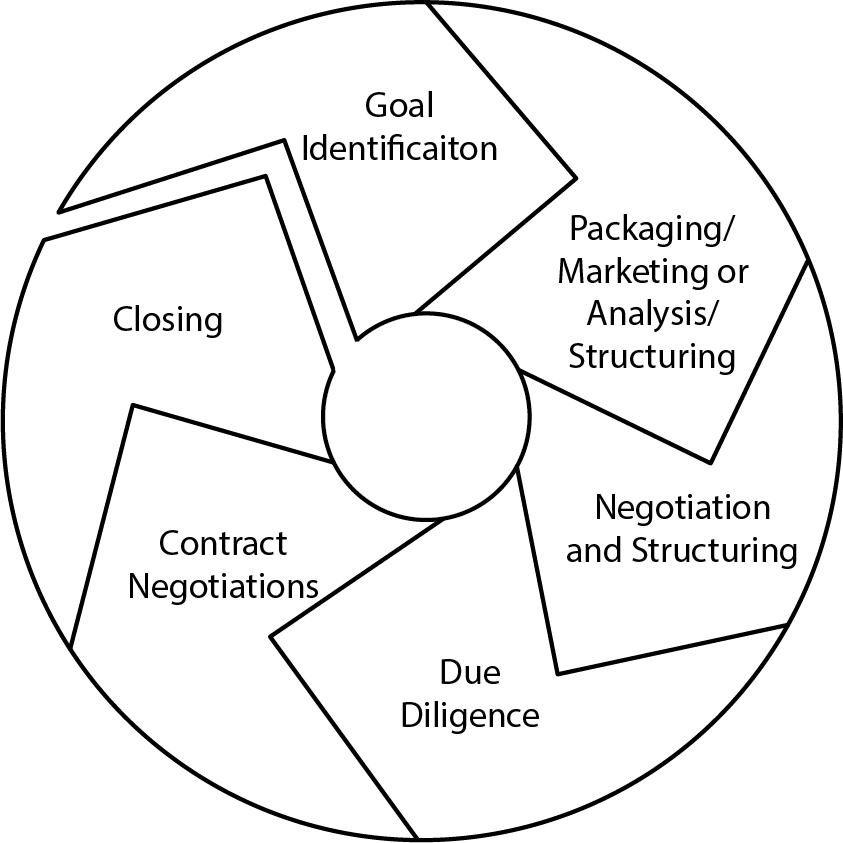By: Barry H. Worth, CM&AA
Now that you have the various pieces of the puzzle in place and the company is ready to be put on the market to be sold – what is the process? Below are the puzzle answers with each piece fitting in at the appropriate time:

Step 1: Goal Identification
Your goals must be specific, realistic and achievable. We learn a lot about the enterprise being disposed of as well as the ownership and management. Together the facilitator helps the client frame a crystal-clear set of sale objectives. During this process there is much planning done as well. You must define the sale strategy, the methodology of the sale process whether it be a full-blown auction process or a more closed and quiet process – better known as a bilateral negotiation or stealth auction. There also needs to be a determination of a minimum threshold of cash to walk away with and the type of transaction desired (asset or stock).
Step 2: Packaging and Marketing
The selling memoranda must convey an accurate and attractive message of the opportunity. The next step is to “learn” the company and convert this data to a document that will meet client and advisory group needs. The sale effort must be directed to a carefully chosen potential buyers list and produce one or more bona fide interested parties.
Step 3: Negotiation and Structuring
An intermediary brings experience to bear to get a fair deal to maximize the sale price. The goals are to meet the clients’ objectives and to close the deal.
Step 4: Due Diligence
Once terms are agreed to in principle and a letter-of-intent is issued, the intermediary will assist in coordination of the prospective buyer’s due diligence, review all relevant data and terms having potential impact on the transaction, and resolve differences that may occur. The agent often will serve as a conduit for questions and concerns of the client and the prospective buyer.
Step 5: Contract Negotiations
Generally, the broker prefers to negotiate final arrangements. Sellers are usually too emotional to represent their own best interest. Where teams of advisors are involved, one person will usually lead the team or be a participant with the legal lead.
Step 6: Closing
Most final dealings and related contracts are somewhat “fluid,” with major or minor provisions being modified, etc. One lead person will deal with these issues and coordinate getting all parties and advisors to a satisfactory arrangement that will close.
Experience is the key “driver” in working a transaction. Buyers, sellers and assorted professionals have widely variant needs, wants and perceptions of value. Oftentimes, many of these are incongruent. A successful deal can occur only if all of these are aligned. The experience of the dealmaker facilities finding the common ground on all issues that will result in a completed deal.
Another alternative prior to selling would be a merger or acquisition, which can add the strategic, human and financial resources to permit an acquirer to grow faster than the competition. Experienced M&A professionals are capable of identifying and pursuing the best of many options available and tailoring them to a client’s particular circumstances that will bring added value to the transaction.
The Experience On Demand process has been developed over years of experience and many transactions. Experienced dealmakers facilitate the process by finding common ground on issues that help in consummating a transaction. These issues may include critical issues from either side, identifying business issues that help determine value, value-added opportunities, avoiding obstacles and sometimes keeping egos in check.
Conclusion:
The most important part of this process is selecting the proper advisory team. This is your one opportunity to maximize the value of what sometimes is your life’s work – make that happen by selecting the right people. Good advisors will be very helpful in guiding you through the process and help you from making common mistakes made in transactions. Some of these mistakes are:
- Timing – whether the market is not ready or the company is not ready but has to sell.
- Not being proactive and waiting for deals to come to you.
- Lack of planning and:
- Having a narrow focus of alternatives.
- Not considering tax planning.
- Not understanding the value of your company.
- Not knowing what you will do when you exit the business.
- Investment vehicles available to you for the funds you walk with.
- Selecting the wrong advisors.
- Underestimating the time it takes to get a transaction done.
- Not running your business as though you were keeping it.
- Not being understanding of the buyers’ needs.
The market is always in constant change and motion; therefore, it is vital to be flexible and to do as much research as possible before deciding the fate of your highly invested assets – yourself and your business.
Good Luck.
Barry H. Worth, CM&AA, CPA (retired), is a Partner of Experience on Demand. Throughout his career of 40+ years, he has been involved with hundreds of M&A transactions in virtually every industry. Contact Barry at barry.worth@experience-on-demand.com or 314.795.6014.

